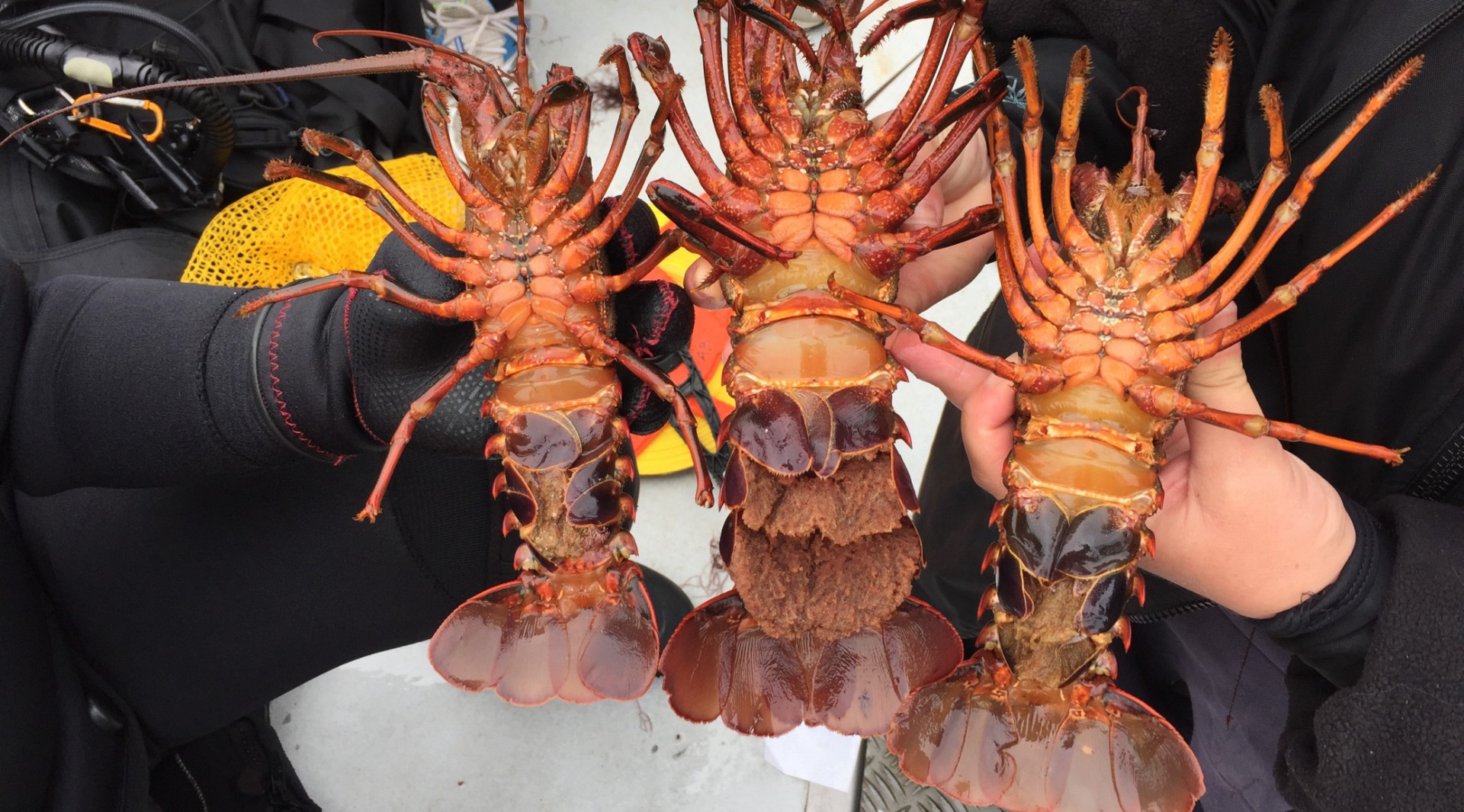Saltwater Fish Report for 9-27-2018
Recreational Spiny Lobster Season to Open Sept. 29
Catalina and Clemente - (Los Angeles County)

by CDFW
9-27-2018
Website
Thousands of lobster fishers are eagerly awaiting the start of the sport season for California’s spiny lobster, which opens at 6 a.m., Saturday, Sept. 29 and continues through March 20, 2019.
According to California Department of Fish and Wildlife (CDFW) Marine Environmental Scientist Jenny Hofmeister, the most lobsters last season were caught off Catalina Island. “In the past, San Diego has usually been the most plentiful spot,” she said. “But recently many fishers are finding success out at the islands.”
A lobster report card is required for all persons fishing for lobster and individuals 16 years or older must also possess a valid sport fishing license and ocean enhancement stamp to take lobster south of Point Arguello. Any person using hoop nets from a public pier and children who are under 16 and fishing for lobster do not need a license but must possess a valid lobster report card.
A typical legal-size spiny lobster will average about one pound in weight. Occasionally divers and hoop netters will find lobsters over five pounds (considered trophy size) in California waters. Spiny lobster taken must measure at least 3 1/4 inches in length and are measured in a straight line on the midline of the back from the rear edge of the eye socket to the rear edge of the body shell. The daily bag limit for lobster is seven per person and an individual may not possess more than seven at any time except when a valid declaration for a multi-day trip has been obtained.
Lobster can be taken with hoop nets and by skin or SCUBA divers by hand only. No appliance (such as fish spears or poles) may be used to assist. Additional regulations governing the sport take of lobster and general fishing information can be found in the California Spiny Lobster Fishing brochure. Lobster fishers should also consult the Marine Protected Area maps for the California coastline to ensure they are not fishing in prohibited waters.
CDFW marine biologists suggest using an oily or aromatic bait to dispense a scent trail that nearby lobsters will follow back to the net. Squid, Pacific mackerel, bonito, anchovies, sardines and even cat food may serve as good bait. A wire mesh bait container will help prevent the loss of bait to fish or other large predators such as seals and sea lions.
Because lobsters are strong and have hair-trigger responses when they sense predators, the best strategy for divers is usually to grab or pin the lobster to the bottom by their body, rather than grabbing it by a leg or antennae which will likely tear off. Although lobsters can regenerate lost limbs, marine biologists have found that these lobsters ultimately produce fewer offspring because of the energy requirements for limb regeneration.
“They definitely can sense your hesitation,” Hofmeister said. “Most of their daily life is spent trying not to get eaten, so they are pretty good at getting away if you aren’t quick enough.”
Lobster report cards must be returned or submitted online to CDFW at the end of each season by April 30, regardless of whether the card was used or any lobster were caught. Fishers who fill up a report card can turn in their card and purchase another. Failure to report catch from all cards by the deadline will result in a nonreporting fee that is charged when you purchase a report card next season.
“Reporting your catch is so important for managing the recreational lobster fishery,” Hofmeister said. “Our goal is to ensure that we can all be catching lobster decades from now, and to do that we need to know how many are being caught, where you are catching them, and what it took to get them. That is why we want to know about all of your trips – including the ones where you get skunked.”
The complete spiny lobster regulations are contained in the 2018-2019 Ocean Sport Fishing regulations booklet, found on CDFW’s website and wherever fishing licenses are sold. A lobster fishing FAQ and other biological information specific to California’s spiny lobstercan also be found on the CDFW website.
< Previous Report Next Report >
< Previous Report Next Report >
More Reports

9-26-2018
Fall-run Chinook Salmon fisheries are currently open in several rivers in the Central Valley, and the California Department of Fish...... Read More

9-25-2018
Southern sea otter numbers have declined off the coast of California since peaking in 2016, but the average population count...... Read More

Website Hosting and Design provided by TECK.net